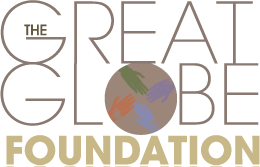20 Mar An update from the field
There is a myth I have been telling myself that I’m not strong enough.
(To endure pain. To carry these people stories. To be an artist.)
I remember stepping off the UN plane and already wanting to turn around. I shield my eyes from the sun and peer onto the Kenyan horizon and nothing seems possible. The world’s largest refugee camp: 320,000 refugees with 2,000 coming over the border every month.
“How does theater fit into all of this”, I wonder.
I had come because the youth had told me months earlier that they wanted their voices heard. “We want people to understand that we are not warts on society, that we exist, and we are not terrorists. We are human beings.” I looked them in the eye, and told them I would return.
I love those moments.
Turning the pages of your life.
Knowing nothing would ever be the same.
And so here I was to create theater in a refugee camp with youth who wanted to feel connected. The same ritual I felt nightly stepping on a stage at home was now part of their survival. The Dadaab Theater Project, as it came to be called, was a theater engagement collaboration connecting youth across cultures, especially American youth and youth from the Dadaab Refugee Camp.
The first three weeks became filled with stories of pain, survival, and love. You quickly realize that fellowship and love triumphs all and that cold, sweet coca cola is a way of survival.
It is now a hot Friday afternoon and I am reading Abdi Rashid’s essay on his search for his own identity.
We had selected our diverse group of four Somalis, one Somali Bantu, and four Ethiopian refugees for our theater company, who together would travel to Nairobi in June to participate in a theater festival with American students and Kenyan youth surrounding the events for World Refugee Day. We were still looking for another member when Abdi handed me his crumpled notebook piece of paper, words scribbled in pen.
He writes,
“It was really my most ugliest tragedy with a blend of harrowing experiences. It was a tragedy that has taken away all my beloved family except my two young sisters. It drained all the blood of my father out, and also reduced the beautiful bodies of my mother and siblings into a charcoal and turned them sooty and unidentifiable. It was really a tragedy, a dreadful tragedy that is imprinted in my mind.”
I read it over and over again until I couldn’t tell where his voice begins and mine ends. It’s not that it never happened. Its just, these stories don’t seem possible. I understood the responsibility an artist carries when holding someone’s story in their hands, for it is this compassion that makes us human and reminds us that we are all the same.
As I sat under the hot sun reading his words, my mind drifted to a suburban Ohio street, when a friend who had been to Dadaab many times turned to me and said, “This will change you.”
And it has.


